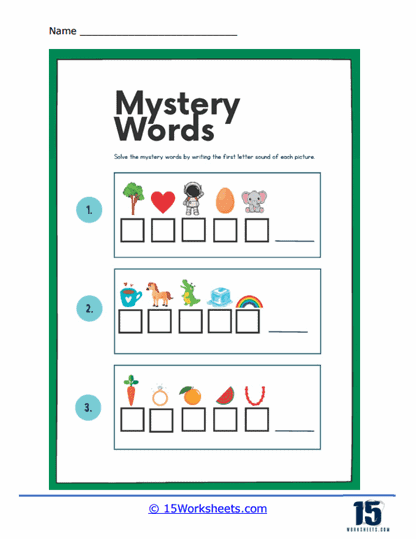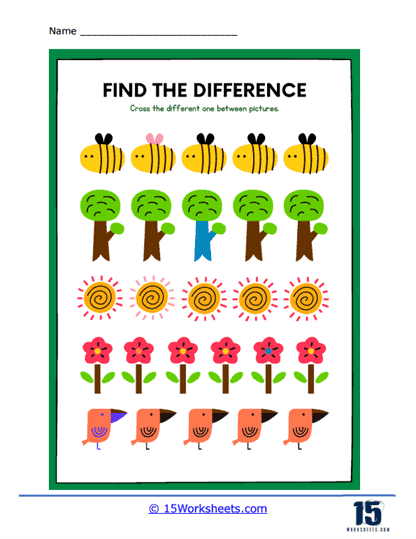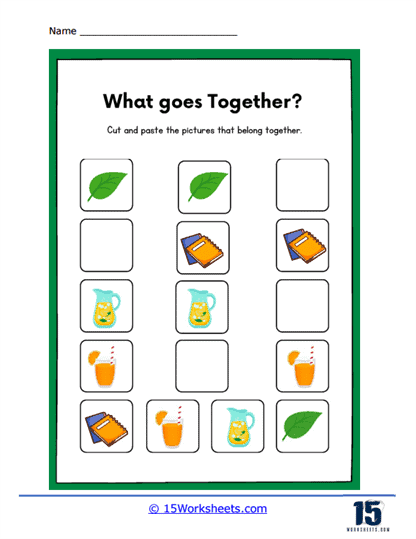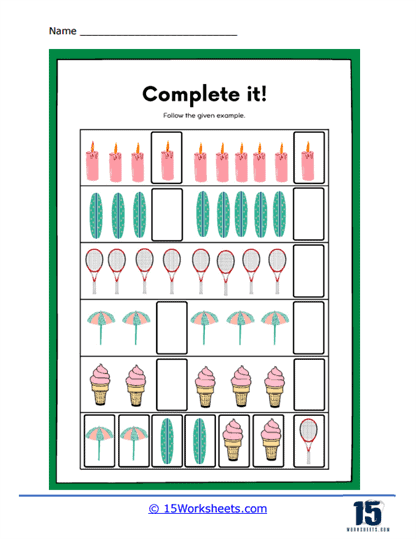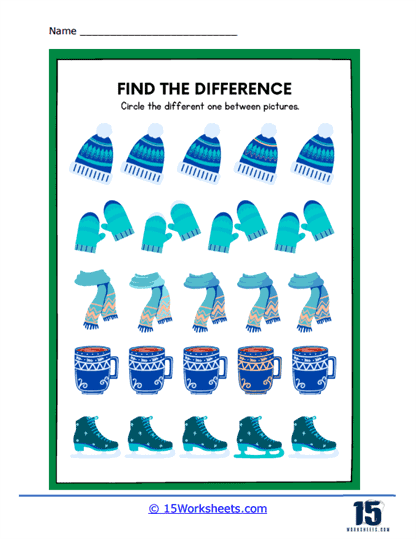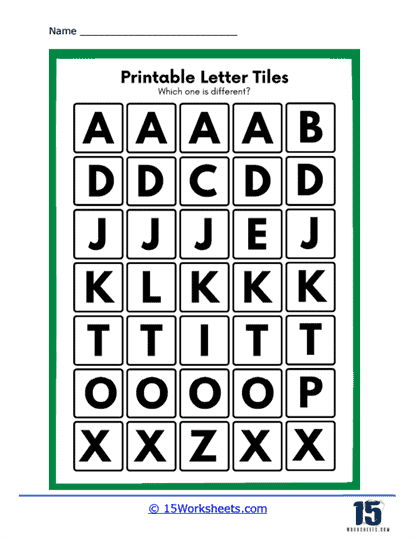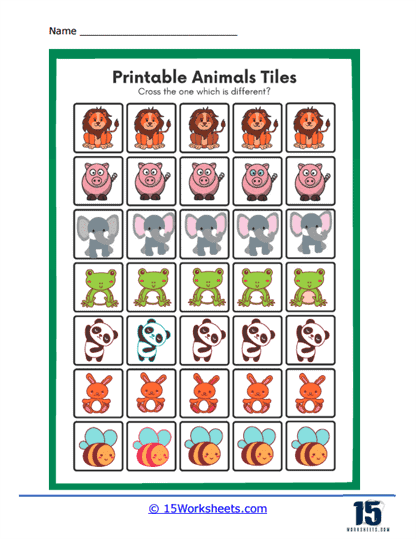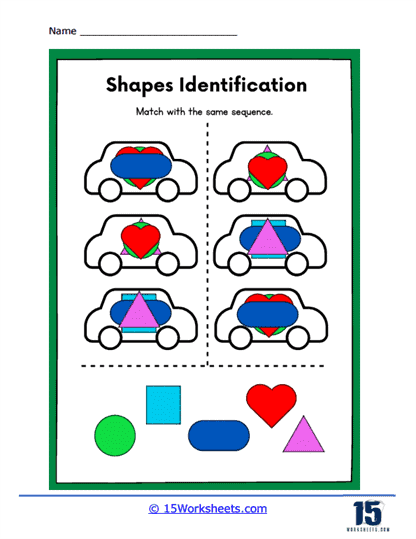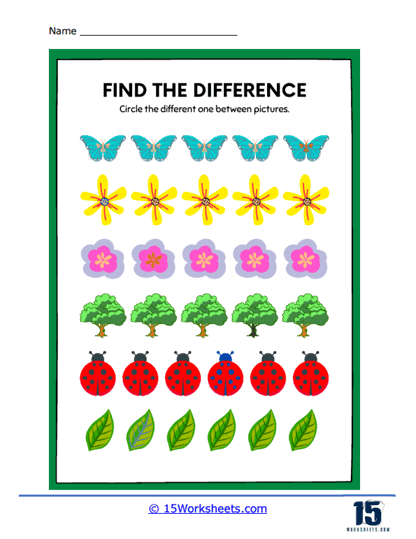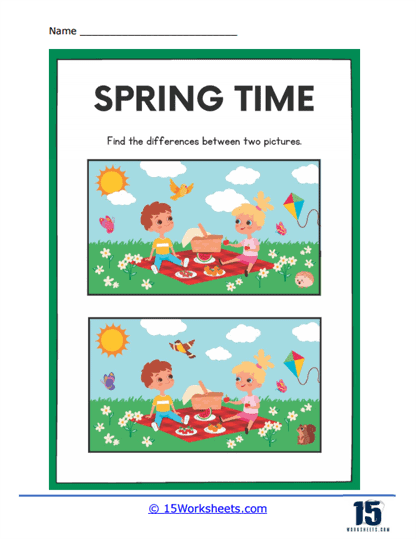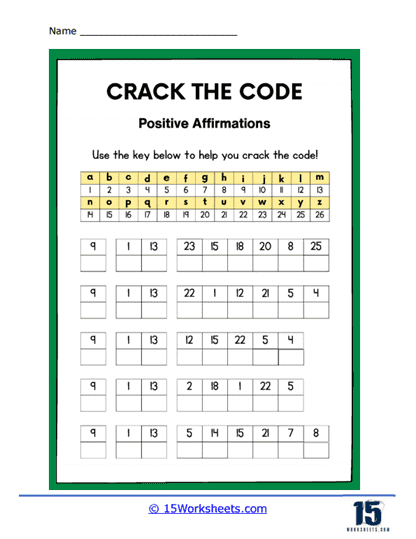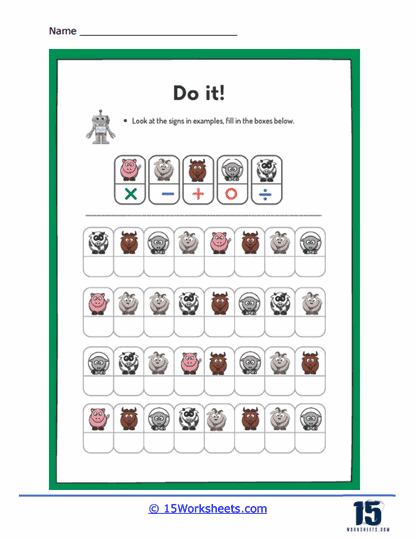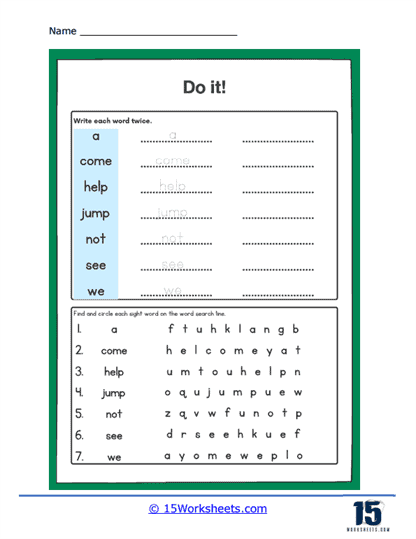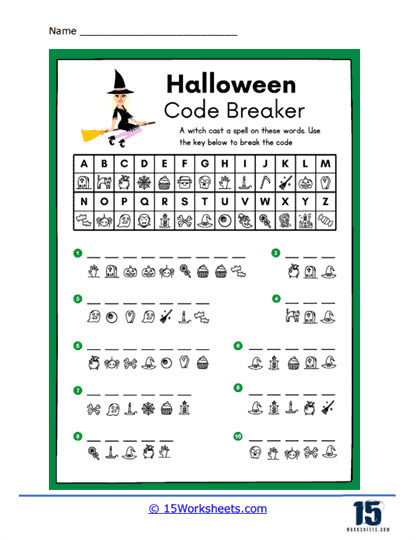Visual Discrimination Worksheets
About These 15 Worksheets
These worksheets play a crucial role in shaping a child’s cognitive development. At first glance, they may seem like simple exercises in recognizing differences and similarities between shapes, patterns, and images, but their impact goes far beyond that. These worksheets are designed to foster a child’s ability to discern subtle distinctions, a skill that forms the foundation for more advanced learning and comprehension in various academic areas. By engaging with these activities, students are not only improving their ability to notice differences; they are also cultivating vital visual perceptual skills that are indispensable for tasks such as reading, writing, and even mathematical reasoning.
The importance of visual discrimination cannot be overstated, especially in early childhood education. As young learners are just beginning to explore the world around them, they rely heavily on their ability to process and interpret visual information. The ability to differentiate between letters, numbers, and symbols is essential for developing literacy and numeracy. For instance, a child who can easily distinguish between the letters “b” and “d” or between a “+” sign and a “-” sign is already on the path to mastering reading and basic math. Visual Discrimination worksheets help sharpen this ability, ensuring that students can recognize these distinctions with confidence and ease.
These worksheets serve as more than just practice for identifying shapes or patterns; they are exercises in attention to detail. In a world where distractions are constant, the ability to focus on the finer points of an image or a pattern is a skill that will benefit students throughout their academic journeys. The meticulous observation required to complete these exercises helps students learn how to concentrate on tasks, an essential habit that translates into better performance in schoolwork and later in life. As students engage with the worksheets, they learn to scan and compare different elements, heightening their awareness of the details that often make all the difference in problem-solving scenarios.
Visual discrimination activities strengthen visual memory, which is another key component of cognitive development. Visual memory is the ability to remember what one sees and recall that information when needed. This skill is especially important when it comes to tasks like reading, where students must remember the shapes and structures of letters and words to decode and comprehend written language. By repeatedly practicing with Visual Discrimination worksheets, students train their brains to retain and recall visual information more effectively, which can lead to improved reading fluency and comprehension.
In addition to enhancing reading skills, visual discrimination is fundamental in mathematics. Mathematics is not only about numbers; it is also about recognizing patterns, interpreting graphs, and understanding geometric shapes. A strong foundation in visual perception allows students to engage more deeply with mathematical concepts, from basic counting to more complex operations like solving equations and analyzing data. For example, when students can easily differentiate between similar-looking numbers, such as 6 and 9, or when they can recognize patterns in a sequence, they are better equipped to tackle math problems with accuracy and confidence.
Perhaps one of the most significant aspects of using visual discrimination worksheets in early education is their ability to prepare students for more complex cognitive tasks. As children progress through their education, the demands on their cognitive abilities increase. The foundational skills they develop through visual discrimination exercises—such as attention to detail, memory retention, and pattern recognition—are the building blocks for critical thinking and problem-solving. These are not just academic skills; they are life skills that will serve students well as they navigate the challenges of the world around them.
Visual perceptual skills are used in everyday activities, from navigating a busy street to reading a map or assembling a puzzle. The more proficient a child becomes at processing visual information, the more capable they are of interacting with their environment in meaningful ways. Whether it’s recognizing faces, following directions, or interpreting symbols, strong visual discrimination abilities empower children to make sense of the world around them with greater accuracy and understanding.
The different types of exercises that you will see in these visual discrimination worksheets include:
Matching Exercises – These involve students matching identical shapes, letters, numbers, or pictures. The task could involve matching objects within a group or finding an identical match from a separate collection. These exercises enhance students’ ability to recognize similarities and notice subtle differences. They develop a student’s ability to compare and contrast, recognize patterns, and remember images. They foster visual memory and enhance attention to detail.
Spot the Difference – These worksheets present students with two nearly identical images and ask them to identify the differences between them. This activity hones their attention to detail and enhances their ability to differentiate between similar-looking objects. These activities enhance the ability to differentiate between similar-looking items. They improve focus and precision in visual observation.
Sequencing Activities – Students are asked to identify and continue a sequence of shapes, patterns, or pictures. These exercises develop pattern recognition and sequential thinking, helping students understand the concept of order and progression. They improve a student’s ability to recognize and continue patterns.
Mazes and Pathways – Here, students must identify the correct path or solve a maze. These exercises stimulate spatial perception and navigational skills. These worksheets boost spatial perception and navigational skills. They help students understand directions and positions within a space.
Hidden Objects – Students are given a complex picture and tasked with finding specific objects within it. This activity boosts concentration and fosters detail-oriented thinking. They enhance the student’s ability to focus and sift through visual clutter.
Sorting and Categorizing Images – Students are asked to sort pictures or symbols based on certain characteristics, such as color, shape, or size. These exercises develop categorization skills and improve pattern recognition. They enhance logical thinking and organizational skills.
These skills are extremely important for students for a variety of reasons:
Academic Skills – Visual discrimination plays a significant role in academic learning. From distinguishing between similar letters like ‘b’ and ‘d’, or numbers like ‘6’ and ‘9’, to spotting patterns in math or recognizing geographical features on a map, these skills underpin a range of academic tasks. In mathematics, kindergarteners need to recognize different numbers, geometric shapes, and patterns. Being able to distinguish between similar-looking numbers such as ‘6’ and ‘9’, or identifying patterns and sequences, relies heavily on visual discrimination skills.
Literacy Development – Visual discrimination is crucial in learning to read and write. Recognizing the differences and similarities between letters and words, understanding the sequencing of letters in words, and interpreting symbols and pictures are all reliant on visual discrimination skills. As kindergarteners begin to learn reading and writing, they must be able to distinguish between visually similar letters such as ‘b’, ‘d’, ‘p’, ‘q’ or ‘m’ and ‘n’. Developing strong visual discrimination skills aids in correctly identifying these letters, which in turn, supports their literacy development.
Cognitive Development – These exercises help enhance various cognitive skills such as attention to detail, memory recall, pattern recognition, and logical thinking. They are fundamental to the development of problem-solving skills. These activities also improve a child’s concentration, focus, and attention to detail, all of which are essential cognitive skills.
Life Skills – Outside the classroom, visual discrimination helps children navigate the world, from distinguishing between different food items, identifying their belongings among others, to interpreting signs and symbols in their environment.
Motor Skills Development – Visual discrimination also has a significant role in developing motor skills. Children need to understand the difference between shapes, directions, and spatial relationships to perform tasks such as tying shoelaces, writing, or playing a sport. Kindergarteners are in the stage of developing fine motor skills, like cutting with scissors or drawing shapes.
Social Skills – As they interact with their peers, kindergarteners need to recognize different faces and expressions, helping them understand emotions and social cues. This recognition is a part of visual discrimination skills, playing a crucial role in their social development.
These worksheets serve as a powerful tool to improve students’ observation skills, critical thinking, focus, and memory. By building a strong foundation in visual discrimination, students are better prepared to learn, understand, and interact with the world around them. This core skills are critical for kindergarteners as they provide a foundational basis for academic learning, social interaction, cognitive development, and the cultivation of motor skills. These skills pave the way for future learning and are crucial for a child’s overall development and independence.
What is Visual Discrimination?
Visual discrimination is the ability to recognize, compare, and distinguish differences or similarities in shapes, patterns, symbols, colors, and objects. This skill allows individuals to identify specific visual features such as size, form, orientation, or position and is essential for everyday activities like reading, writing, interpreting charts, and even recognizing faces. In essence, it’s about the brain’s ability to process and differentiate what the eyes see. Children typically develop this skill early in life, but it continues to play a crucial role in both learning and practical problem-solving throughout adulthood. For instance, visual discrimination helps someone differentiate between letters like “b” and “d,” or distinguish between similar colors, patterns, or objects.
Importance of Visual Discrimination in Daily Life
Visual discrimination is fundamental to many tasks that require attention to detail. In education, this skill is crucial for early literacy, as recognizing letter shapes and differences is essential for reading and writing. Beyond academics, visual discrimination is important in many practical areas of life. It plays a role in activities like driving, where you need to differentiate traffic signs, or in cooking, where you recognize the differences between ingredients. Professionals like architects, graphic designers, surgeons, and athletes rely heavily on visual discrimination to interpret visual information quickly and accurately in their work.

